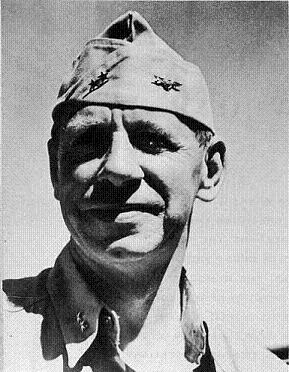The Pacific War Online Encyclopedia: Sherman, Frederick C. (original) (raw)
| ![]() The Pacific War Online Encyclopedia | |
| -------------------------------------------------------------------------------- | |
The Pacific War Online Encyclopedia | |
| -------------------------------------------------------------------------------- | |
Sherman, Frederick Carl (1888-1957)

U.S. Navy. Via Wikipedia Commons
“Ted” Sherman was born in Michigan and graduated from the Academy in 1910. He served with cruisers and battleships for several years before transferring to submarinesin 1914. He twice attended the Naval War College before transferring toaviation, becoming captainof the Lexington in 1940.
Sherman was the tactician behind Brown's early carrier operations, and he believed strongly in the value of massing carriers into a single task force.
After Lexington was lost at Coral Sea, with Sherman the last man off the ship, he was transferred to the staff of the Chief of Naval Operations until October 1942. He commanded carrier divisions until 1944, when he served briefly as commander of shore-based aircraft on the West Coast, then returned to sea to command carrier task forces for the remainder of the war. He led the Enterprise task group at Rennell Island and other task groups in the Marshalls, at Bougainville, during the raid on Rabaul, at Leyte, and at Okinawa.
Sherman was an aggressive and capable carrier task force commander, but he also had something of a chip on his shoulder. Tuohy (2007) tells of Sherman almost colliding with a young quartermaster on a narrow ladder:
"Son, who long have you been in the navy?"
"About a year, sir."
"Well, I've been in for forty years, and now people get out of my way when I'm coming. And when you're in forty years, they'll get out of your way. Do you understand me?"
Sherman responded to a 1943 survey of senior Navy officers with the opinion that aviators should have the dominant voice in Navy policy and should hold all the highest commands, including Nimitz'. John Towers assessed him as "Self-interest. Very unpopular with aviators because of intolerance. Able but not for high command because of personality absolutely precludes establishment of wholehearted loyalty" [sic]. His abrasive personality likely cost him the command of the Fast Carrier Task Force until the war was all but over. Sherman wrote several newspaper articles after the war attacking Spruance for his decisions at Midwayand the Battle of the Philippine Sea. He was retired in 1947 for his participation in the postwar “Revolt of the Admirals” that sought to preserve an independent naval air arm.
Service record
| 1888-5-27 | Born in Port Huron, Michigan | |
|---|---|---|
| 1910 | Ensign | Graduates from Naval Academy, standing 24th in a class of 131 |
| 1914 | Qualifies in submarines. Assigned to H-1 | |
| 1916 | H-2 | |
| 1918-1-27 | O-7 | |
| 1936 | Qualifies as naval aviator. | |
| 1940-6 | Captain | Commander, CV Lexington |
| 1942-4-3 | Rear admiral | |
| 1942-5 | Staff, Chief of Naval Operations | |
| 1942-11 | Commander, Carrier Division 2 | |
| 1943-7-16 | Commander, Carrier Division 1 | |
| 1944-3 | Commander, Fleet Air, West Coast | |
| 1944-8 | Commander, Carrier Division 1 | |
| 1945-8-14 | Commander, 1 Fast Carrier Task Force | |
| 1946-1-18 | Vice admiral | Commander, 5 Fleet |
| 1947-3-1 | Admiral | Retires |
| 1957-7-27 | Dies at San Diego Naval Hospital |
References
The Pacific War Online Encyclopedia © 2007-2009 by Kent G. Budge. Index
